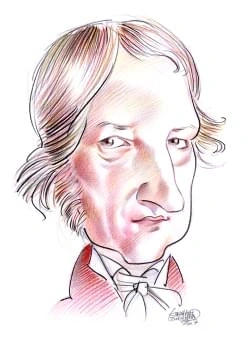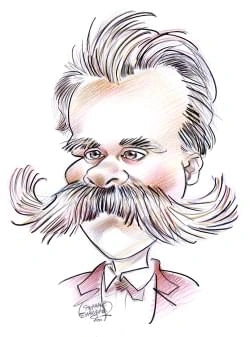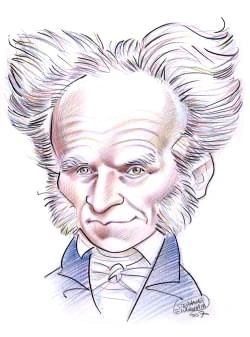787 résultats pour "percent"
-
Gardening - biology.
of synthetic and organic fertilizers, see Organic Farming.) Fertilizers usually are sold in packages, on which the percentage by weight of the macronutrients nitrogen (N), phosphorus (P), and potassium (K) are listed on thelabel—always in the order N-P-K. For example, a fertilizer that is labeled 10-5-3 is 10 percent nitrogen, 5 percent phosphorus, and 3 percent potassium. V PLANTING AND TRANSPLANTING Before planting seeds, gardeners prepare, or till, the soil using a variety of methods. Some...
-
Abortion.
Intact dilation and extraction, also referred to as a partial birth abortion, consists of partially removing the fetus from the uterus through the vaginal canal, feet first,and using suction to remove the brain and spinal fluid from the skull. The skull is then collapsed to allow complete removal of the fetus from the uterus. III SOCIAL AND ETHICAL ISSUES Abortion has become one of the most widely debated ethical issues of our time. On one side are pro-choice supporters—individuals who favor a...
-
Gold - chemistry.
producers of gold during this period. Spain's domination in South America resulted, in the 16th century, in a large increase in gold produced in the New World; someresulted from simple seizure of gold from the Native Americans, who had long mined the metal. In the same century Mexico contributed about 9 percent of the totalworld production. Gold was discovered in Australia in February 1851, and rich fields were found there. By the middle of the 19th century the United States produced a considera...
-
Drug Dependence.
these drugs develops rapidly, no withdrawal syndrome is apparent when they are discontinued. Phencyclidine, or PCP, known popularly by such names as “angel dust” and “rocket fuel,” has no medical purpose for humans but is occasionally used by veterinarians asan anesthetic and sedative for animals. It became a common drug of abuse in the late 1970s, and is considered a menace because it can easily be synthesized. Itseffects differ from those of other hallucinogens. LSD, for example, produces deta...
-
Yukon Territory - Geography.
Tourism is the second most important private sector industry in the Yukon. Visitors come to fish, hunt, enjoy the rugged scenery, and see the historic buildings andcreeks associated with the gold rush. Some marten, lynx, muskrat, wolverine, and other fur-bearing animals are still trapped, but the Yukon plays a minor role in Canadian fur production. The Yukon’s manufacturing industries consist almost exclusively of some mineral refining, printing, and sawmilling. Several hydroelectric plants gene...
-
Yukon Territory - Canadian History.
Tourism is the second most important private sector industry in the Yukon. Visitors come to fish, hunt, enjoy the rugged scenery, and see the historic buildings andcreeks associated with the gold rush. Some marten, lynx, muskrat, wolverine, and other fur-bearing animals are still trapped, but the Yukon plays a minor role in Canadian fur production. The Yukon’s manufacturing industries consist almost exclusively of some mineral refining, printing, and sawmilling. Several hydroelectric plants gene...
-
Yemen - country.
port. Al Ḩudaydah (155,110), in the Tih āmah, is the second largest port. Ta‘izz, (178,043), in the highlands above Aden, is an important commercial and light industrialcenter. Among Yemen’s larger towns are Şa‘dah, far to the north; Dham ār, Yarim, and Ibb, in the middle region; Al Mukall ā, on the southern coast; and in Hadhramaut,the towns of Shib ām, Say‘ ūn, and Tar īm. C Language Nearly all Yemenis speak Arabic. However, the country’s extremely rugged terrain, widely separated population...
-
Greenhouse Effect.
addition, humans cut down huge tracts of trees for lumber or to clear land for farming or building. This process, known as deforestation, can both release the carbonstored in trees and significantly reduce the number of trees available to absorb carbon dioxide. As a result of these human activities, carbon dioxide in the atmosphere is accumulating faster than Earth’s natural processes can absorb the gas. By analyzing airbubbles trapped in glacier ice that is many centuries old, scientists have d...
-
-
Côte d'Ivoire - country.
D Culture Traditional artistic expressions in Côte d’Ivoire include woodcarvings (particularly masks), decorative fabrics, and acrobatic dancing. Urban populations have beengreatly influenced by French culture. The French language is almost universally used in the written literature of Côte d’Ivoire, to the exclusion of the African languages. IV ECONOMY About 60 percent of Côte d’Ivoire’s total labor force is employed in farming and forestry. Government efforts to avoid dependence on a small...
-
Slovenia - country.
Democratic Party of Slovenia, the Christian Democratic Party, United List, the Slovenian National Party, the Democratic Party of Slovenia, and Greens of Slovenia. Slovenia has eight trial courts, four appellate courts, and a Supreme Court. The Assembly appoints all judges, including the justices of the Supreme Court. Slovenia hasan extensive network of social service programs sponsored by the government, including low-cost medical coverage and retirement pensions. Slovenia had an army of 6,550 a...
-
Phoenix (city, Arizona) - geography.
The company’s irrigation system followed the network of canals that were built there by the Hohokam some 500 years earlier. In October 1870, several settlers foundedthe site of modern Phoenix. In recognition of the former Hohokam culture, settler Darrell Duppa likened the new community to the phoenix, a mythological bird thatconsumed itself by fire every 500 years and arose anew from the ashes. Thereafter, the group adopted Phoenix as the settlement’s name. Within a short time the areawas produc...
-
Columbus (Ohio) - geography.
A balance among manufacturing, technology, research, and financial activities has helped Columbus’s economy to continue to boom. Much of the city’s expansion resultsfrom its function as a sophisticated service center. By 1990 manufacturing occupied only 12 percent of the area’s labor force. That contrasted with services, includinggovernment, finance, and transportation and utilities, which accounted for almost 60 percent of all employment. The two largest employers in Columbus are state governme...
-
Mental Retardation.
For example, measles, chicken pox, and whooping cough may lead to encephalitis and meningitis, which can damage the brain. Physical trauma to the brain can also cause mental retardation. Brain damage may result from accidental blows to the head, near drowning, severe child abuse, andchildhood exposure to such toxins as lead and mercury. Experts believe that poverty and a lack of stimulation during infancy and early childhood can be factors inmental retardation. Children raised in poor environmen...
-
Mississippi - geography.
The climate of Mississippi is characterized by long, hot, and humid summers and generally mild winters. The higher lands in the northeast are usually cooler than otherareas of the state. D1 Temperature Average January temperatures range from about 6° C (about 42° F) in northeastern Mississippi to about 12° C (about 54° F) along the Gulf Coast. No part of the stateis entirely free from freezing temperatures, but prolonged periods of extreme cold rarely occur. Temperatures more than 15° C (30° F)...
-
Mississippi - USA History.
The climate of Mississippi is characterized by long, hot, and humid summers and generally mild winters. The higher lands in the northeast are usually cooler than otherareas of the state. D1 Temperature Average January temperatures range from about 6° C (about 42° F) in northeastern Mississippi to about 12° C (about 54° F) along the Gulf Coast. No part of the stateis entirely free from freezing temperatures, but prolonged periods of extreme cold rarely occur. Temperatures more than 15° C (30° F)...
-
Connecticut - geography.
The state’s shoreline, when all the bays and inlets are taken into account, has a total length of 995 km (618 mi). The coastline is deeply indented by long estuaries androcky inlets, and there are many sandy beaches and stretches of tidal marsh. There are several good harbors along the coast, the most important of which is at NewHaven. A few small islands lie offshore in Long Island Sound. D Climate Connecticut has long, hot summers and cold winters. The climate does not vary greatly from place...
-
-
Connecticut - USA History.
The state’s shoreline, when all the bays and inlets are taken into account, has a total length of 995 km (618 mi). The coastline is deeply indented by long estuaries androcky inlets, and there are many sandy beaches and stretches of tidal marsh. There are several good harbors along the coast, the most important of which is at NewHaven. A few small islands lie offshore in Long Island Sound. D Climate Connecticut has long, hot summers and cold winters. The climate does not vary greatly from place...
-
Nuclear Energy
I
INTRODUCTION
Gundremmingen Nuclear Power Plant, Germany
The first of three boiling-water nuclear reactors at Germany's Gundremmingen plant began operating in 1966 but was
permanently shut down after being decommissioned in 1983.
such as ¯U is induced by the absorption of a neutron as in producing cesium-140, rubidium-93, three neutrons, and 200 MeV, or 3.2 × 10 -11 J (7.7 × 10 -12 cal). A nuclear fission reaction releases 10 million times as much energy as is released in a typical chemical reaction. See Nuclear Chemistry. III NUCLEAR ENERGY FROM FISSION The two key characteristics of nuclear fission important for the practical release of nuclear energy are both evident in equation (2). First, the energy per fiss...
-
Election.
majority systems usually reduce the number of competitive political parties—for example, the mostly two-party system in the United States. Proportional representation systems boost participation by increasing the value of a vote to smaller or more marginal portions of a national population. In the UnitedStates, plurality or majority systems have reduced the incentive to vote of citizens who do not identify closely with the Democratic or Republican Party. Disillusionmentwith the major parties and...
-
Ohio - geography.
conflict with modified Gulf air and causing frontal or cyclonic storms. Gulf air is dominant in summer. In fall, polar air passing over Lake Erie is modified, delaying thekilling frost along the adjacent shoreline. C1 Temperatures The mean annual temperatures for the state range from 9° C (48° F) in the northeast to 13° C (55° F) in the south. Average January temperatures range from -4° C(24° F) in the west to 2° C (35° F) in the south. July averages are 24° C (76° F) in the south and 23° C (73...
-
Ohio - USA History.
conflict with modified Gulf air and causing frontal or cyclonic storms. Gulf air is dominant in summer. In fall, polar air passing over Lake Erie is modified, delaying thekilling frost along the adjacent shoreline. C1 Temperatures The mean annual temperatures for the state range from 9° C (48° F) in the northeast to 13° C (55° F) in the south. Average January temperatures range from -4° C(24° F) in the west to 2° C (35° F) in the south. July averages are 24° C (76° F) in the south and 23° C (73...
-
Global Warming.
some of the warming influence of increasing greenhouse gases. A1 Carbon Dioxide Carbon dioxide is the second most abundant greenhouse gas, after water vapor. Carbon dioxide constantly circulates in the environment through a variety of naturalprocesses known as the carbon cycle. It is released into the atmosphere from natural processes such as eruptions of volcanoes; the respiration of animals, whichbreathe in oxygen and exhale carbon dioxide; and the burning or decay of plants and other organic...
-
Alabama (state) - geography.
indentations along the coast are measured, the state’s shoreline is 977 km (607 mi) long. It includes the shores of Mobile Bay, an inlet 56 km (35 mi) long at the mouthof the Mobile River. Barrier beaches partly block the entrance to the bay, leaving narrow openings on either side of Dauphin Island. Dauphin and other islands alongAlabama’s coast west of Mobile Bay are separated from the mainland by Mississippi Sound. D Climate Alabama has a humid subtropical climate, with short, relatively mild...
-
Alabama (state) - USA History.
indentations along the coast are measured, the state’s shoreline is 977 km (607 mi) long. It includes the shores of Mobile Bay, an inlet 56 km (35 mi) long at the mouthof the Mobile River. Barrier beaches partly block the entrance to the bay, leaving narrow openings on either side of Dauphin Island. Dauphin and other islands alongAlabama’s coast west of Mobile Bay are separated from the mainland by Mississippi Sound. D Climate Alabama has a humid subtropical climate, with short, relatively mild...
-
-
South Carolina - geography.
(20° F) or lower, occur each winter. July temperatures average 27° C (80° F) in most of the state, with temperatures in the lower 20°s C (lower 70°s F) in themountains. Except in the mountains, summer daytime highs throughout South Carolina often enter the lower 30°s C (lower 90°s F). The temperature in July in Columbiaranges from 21° to 33° C (70° to 92° F). D2 Precipitation Central South Carolina has an average annual precipitation (both rainfall and snowfall) of 1,140 mm (45 in). Greater amo...
-
South Carolina - USA History.
(20° F) or lower, occur each winter. July temperatures average 27° C (80° F) in most of the state, with temperatures in the lower 20°s C (lower 70°s F) in themountains. Except in the mountains, summer daytime highs throughout South Carolina often enter the lower 30°s C (lower 90°s F). The temperature in July in Columbiaranges from 21° to 33° C (70° to 92° F). D2 Precipitation Central South Carolina has an average annual precipitation (both rainfall and snowfall) of 1,140 mm (45 in). Greater amo...
-
Delaware - geography.
D Climate Delaware has generally hot and humid summers and mild winters. D1 Temperature In July, average daytime temperatures are usually in the upper 20°s to lower 30°sC (80°sF) or even higher. But because summer nights tend to be cooler than thedays, July averages are about 24°C (about 75°F). In addition, onshore sea breezes can reduce daytime temperatures along the coast by 3 to 6 Celsius degrees (5 to 10Fahrenheit degrees). January averages range from -1°C (31°F) at Newark, in the north, t...
-
Delaware - USA History.
D Climate Delaware has generally hot and humid summers and mild winters. D1 Temperature In July, average daytime temperatures are usually in the upper 20°s to lower 30°sC (80°sF) or even higher. But because summer nights tend to be cooler than thedays, July averages are about 24°C (about 75°F). In addition, onshore sea breezes can reduce daytime temperatures along the coast by 3 to 6 Celsius degrees (5 to 10Fahrenheit degrees). January averages range from -1°C (31°F) at Newark, in the north, t...
-
Rain Forest.
dropped into the heart of the forest by helicopters. Suspended from the crane’s long, movable arm is a large gondola that functions as a mobile treetop laboratory.Moving from tree to tree, forest researchers collect specimens, conduct experiments, and observe life in the canopy frontier. The highest stratum of the rain forest is made up of the emergent trees, those individuals that stick up above the forest canopy. Emergents, which do not form acontinuous layer, are usually the giants of the for...
-
Minnesota - geography.
C Climate Minnesota’s climate is classified as humid continental because normally there is a sufficient amount of precipitation to provide at least some surplus for runoff, andbecause Minnesota’s temperature conditions are largely controlled by its location in the interior of the large landmass of North America. The result is extreme seasonaltemperature variations. The average January temperature is about -18°C (about 0°F) in the northwest and about -10°C (about 14°F) in the south, but thetherm...
-
Minnesota - USA History.
C Climate Minnesota’s climate is classified as humid continental because normally there is a sufficient amount of precipitation to provide at least some surplus for runoff, andbecause Minnesota’s temperature conditions are largely controlled by its location in the interior of the large landmass of North America. The result is extreme seasonaltemperature variations. The average January temperature is about -18°C (about 0°F) in the northwest and about -10°C (about 14°F) in the south, but thetherm...
-
Air Pollution.
Several pollutants attack the ozone layer. Chief among them is the class of chemicals known as chlorofluorocarbons (CFCs), formerly used as refrigerants (notably in airconditioners), as agents in several manufacturing processes, and as propellants in spray cans. CFC molecules are virtually indestructible until they reach thestratosphere. Here, intense ultraviolet radiation breaks the CFC molecules apart, releasing the chlorine atoms they contain. These chlorine atoms begin reacting withozone, br...
-
-
Slavery in the United States - U.
tripled, from about 1.2 million to almost 4 million in 1860. The natural growth of the slave population meant that slavery could survive without new slave imports. Natural population growth also hastened the transition from an African to an African American slave population. By the 1770s, only about 20 percent of slaves in thecolonies were African-born, although the concentration of Africans remained higher in South Carolina and Georgia. After 1808 the proportion of African-born slavesbecame tin...
-
Ontario - Geography.
governed Ontario’s initial settlement and development. The province’s most important river is the St. Lawrence. Its route was much improved and enlarged by dredgingand canal building in the mid-20th century. This enabled large ocean-going vessels to reach Great Lake ports ( see St. Lawrence Seaway). The Ottawa River was an important early route to the interior for fur traders and timber merchants. The Niagara River, because of its falls, is a great center of hydroelectric power as well as aninte...
-
Ontario - Canadian History.
governed Ontario’s initial settlement and development. The province’s most important river is the St. Lawrence. Its route was much improved and enlarged by dredgingand canal building in the mid-20th century. This enabled large ocean-going vessels to reach Great Lake ports ( see St. Lawrence Seaway). The Ottawa River was an important early route to the interior for fur traders and timber merchants. The Niagara River, because of its falls, is a great center of hydroelectric power as well as aninte...
-
Wyoming (state) - geography.
The basins, which lie in the rain shadow of mountains, are very dry, with an average annual precipitation of about 250 mm (about 10 in) or less; the Great Plains regionhas an annual average of about 380 mm (about 15 in), and the Black Hills region receives slightly more. Thunderstorms and hailstorms are relatively frequent insummer. The annual snowfall ranges from about 500 mm (about 20 in) in the Bighorn Basin to well over 5,100 mm (over 200 in) in the higher mountains, where annualprecipitatio...
-
Wyoming (state) - USA History.
The basins, which lie in the rain shadow of mountains, are very dry, with an average annual precipitation of about 250 mm (about 10 in) or less; the Great Plains regionhas an annual average of about 380 mm (about 15 in), and the Black Hills region receives slightly more. Thunderstorms and hailstorms are relatively frequent insummer. The annual snowfall ranges from about 500 mm (about 20 in) in the Bighorn Basin to well over 5,100 mm (over 200 in) in the higher mountains, where annualprecipitatio...
-
Idaho - geography.
Idaho-Montana state line in the southern part of the Bitterroot Mountains. Consequently, nearly all the rivers in the state drain toward the Pacific. Most of Idaho lieswithin the drainage basin of the Columbia River system. The Snake River, which is the chief river in southern and central Idaho, follows a crescent-shaped course forabout 790 km (about 490 mi) across southern Idaho. It then swings northward along the Idaho state line and joins the Columbia River in Washington. Major tributariesof...
-
Idaho - USA History.
Idaho-Montana state line in the southern part of the Bitterroot Mountains. Consequently, nearly all the rivers in the state drain toward the Pacific. Most of Idaho lieswithin the drainage basin of the Columbia River system. The Snake River, which is the chief river in southern and central Idaho, follows a crescent-shaped course forabout 790 km (about 490 mi) across southern Idaho. It then swings northward along the Idaho state line and joins the Columbia River in Washington. Major tributariesof...
-
Statistics
I
INTRODUCTION
Statistics, branch of mathematics that deals with the collection, organization, and analysis of numerical data and with such problems as experiment design and decision
making.
frequency, column (d), is the ratio of the frequency of an interval to the total count; the relative frequency is multiplied by 100 to obtain the percent relative frequency.The cumulative frequency, column (e), represents the number of students receiving grades equal to or less than the range in each succeeding interval; thus, thenumber of students with grades of 30 or less is obtained by adding the frequencies in column (c) for the first three intervals, which total 53. The cumulative relativef...
-
-
Advertising.
Advertising agencies make money in a variety of ways. When the agency uses the client’s advertising budget to buy time for an ad on the radio or on television or whenit buys space for an ad in a newspaper or magazine, the media outlet allows the agency to keep 15 percent of the cost of the space or the time as a commission. The15 percent commission has become an advertising industry standard and usually accounts for the largest portion of the agency’s income. Agencies also charge clientsfor the...
-
Brazil - country.
occasional droughts. Brazil contains a wealth of mineral and plant resources that have not yet been fully explored. It possesses some of the world’s largest deposits of iron ore and containsrich deposits of many other minerals, including gold and copper. Brazil’s fossil fuel resources are modest, but this limitation is offset by the considerable hydroelectricpotential of the nation’s many rivers. Although Brazil is an important producer of tropical crops, areas of highly fertile land are limited...
-
Mercury (planet) - astronomy.
In 1991 powerful radio telescopes on Earth revealed signs of possible deposits of ice in the polar regions of Mercury. These ice deposits occur in areas where sunlightnever falls, such as crater bottoms near both of the planet’s poles. Similar ice deposits may have been found during the 1990s near the poles of the Moon by theClementine and Lunar Prospector spacecrafts. The ice on Mercury likely comes from comets or water-bearing meteorites that have hit Mercury over the planet’s historyup throug...
-
Kentucky - geography.
The climate of Kentucky is characterized by warm or hot summers and cool winters. Throughout the year, temperatures do not vary greatly from place to place,although they are generally slightly lower in the Appalachian Plateaus region than elsewhere in the state. Average July temperatures are usually from 24° to 27°C (76°to 80°F) in the central and western areas and from 23° to 24°C (74° to 76°F) in the east. January averages range from below 1°C (34°F) in the northern Bluegrassregion to more tha...
-
Kentucky - USA History.
The climate of Kentucky is characterized by warm or hot summers and cool winters. Throughout the year, temperatures do not vary greatly from place to place,although they are generally slightly lower in the Appalachian Plateaus region than elsewhere in the state. Average July temperatures are usually from 24° to 27°C (76°to 80°F) in the central and western areas and from 23° to 24°C (74° to 76°F) in the east. January averages range from below 1°C (34°F) in the northern Bluegrassregion to more tha...
-
Québec - Geography.
facilities. Tributaries south of the St. Lawrence include the Richelieu, the Saint-François, and the Chaudière rivers, which are only a few hundred kilometers long. TheRimouski and Matane rivers, also south of the St. Lawrence, are popular areas for recreation and salmon fishing. In the Canadian Shield, the longest rivers are theRupert, Eastmain, Grande Baleine, and La Grand-Rivière, which is the site of a huge hydroelectric complex. C Coastlines Québec has two systems of saltwater coastline. O...
-
Québec - Canadian History.
facilities. Tributaries south of the St. Lawrence include the Richelieu, the Saint-François, and the Chaudière rivers, which are only a few hundred kilometers long. TheRimouski and Matane rivers, also south of the St. Lawrence, are popular areas for recreation and salmon fishing. In the Canadian Shield, the longest rivers are theRupert, Eastmain, Grande Baleine, and La Grand-Rivière, which is the site of a huge hydroelectric complex. C Coastlines Québec has two systems of saltwater coastline. O...
-
Cancer (medicine).
unable to repair the DNA damage, p53 instructs the cell to undergo programmed cell death, or apoptosis , putting a stop to runaway cell division before it starts. Programmed cell death is a normal part of cell life and is tightly controlled by many genes, primarily p53. In a cancerous cell, one or more mutations prevent these genes from doing their jobs. When mutated, p53 allows a cell to continue to divide, even with damaged DNA.This can lead to additional mutations in proto-oncogenes or tumor...
-
-
Pennsylvania - geography.
B Rivers and Lakes There are three major river basins in Pennsylvania: the Susquehanna, the Ohio, and the Delaware. Together they drain more than 90 percent of Pennsylvania’s landarea. Most of eastern and central Pennsylvania is drained by the Susquehanna and Delaware systems. The western part of the state is drained by the Allegheny andMonongahela rivers, which join at Pittsburgh to form the Ohio. In addition to the three major river basins, short streams flowing into Lake Erie drain the north...
-
Pennsylvania - USA History.
B Rivers and Lakes There are three major river basins in Pennsylvania: the Susquehanna, the Ohio, and the Delaware. Together they drain more than 90 percent of Pennsylvania’s landarea. Most of eastern and central Pennsylvania is drained by the Susquehanna and Delaware systems. The western part of the state is drained by the Allegheny andMonongahela rivers, which join at Pittsburgh to form the Ohio. In addition to the three major river basins, short streams flowing into Lake Erie drain the north...
}})








